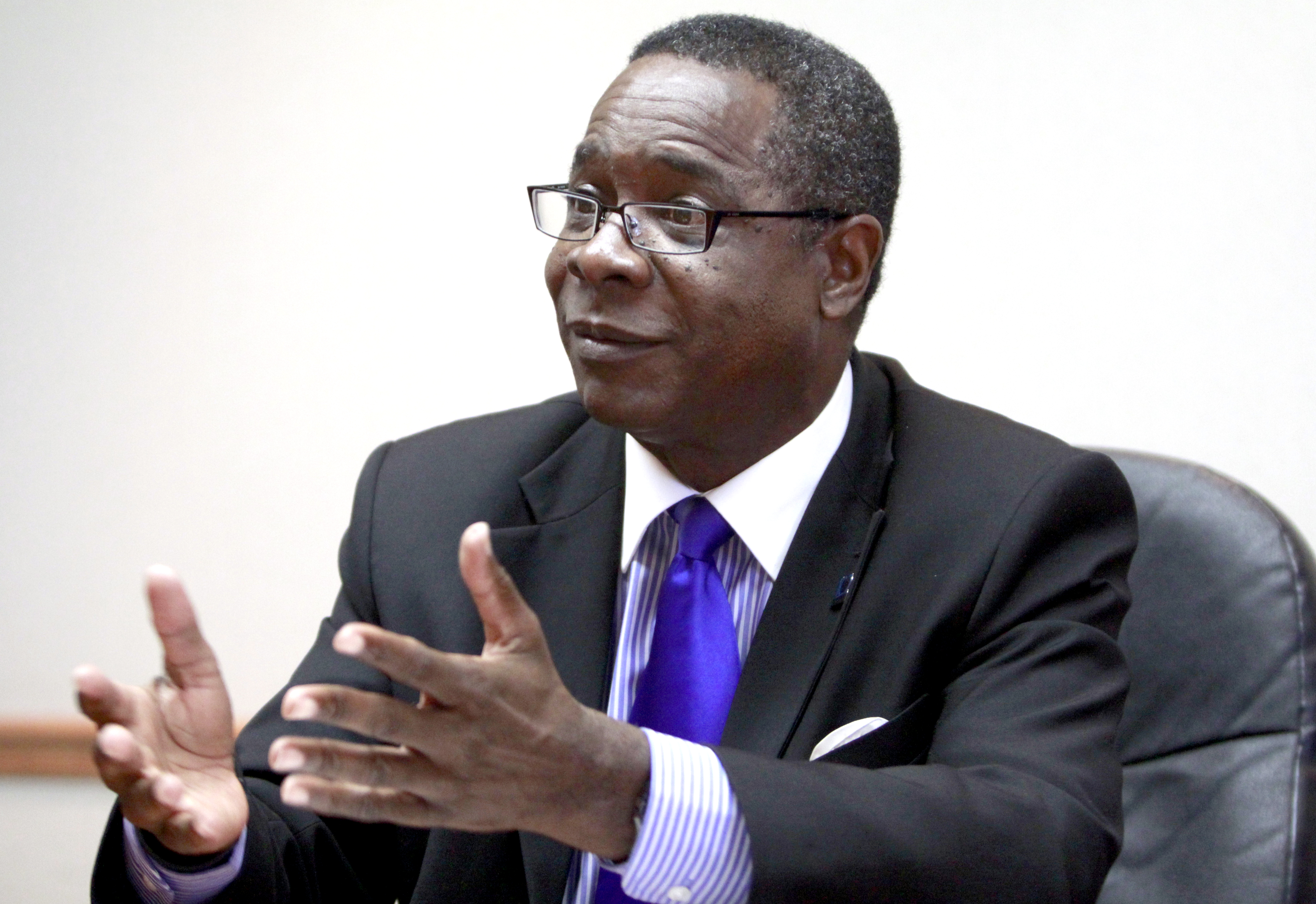When the time came for Chattanooga student Brandon Batts to decide where he wanted to pursue his dream of owning a major league baseball team, Middle Tennessee State University was last on his list of 13 colleges.
But when it came down to the decision, the "at home" feeling and cost offered by the Murfreesboro, Tenn., university were enough to convince the Tyner Academy graduate that MTSU was the right place for him.
"It felt everybody was there for me," said the 22-year-old senior who's majoring in business management and sports administration. "It had a small Southern feeling."
Hamilton County and the surrounding area are increasingly important for Middle Tennessee, which has students enrolled from 94 of the 95 counties in Tennessee, school officials said Thursday during a meeting with Chattanooga Times Free Press reporters and editorial board. The only county without a student at Middle Tennessee is Hancock, they said.
The school, which is celebrating its centennial this year, has the largest undergraduate enrollment in the state, according to President Sidney McPhee, and is the second-largest university in Tennessee, with close to 27,000 students, the majority of whom commute.
"We've grown over the years as a major comprehensive university, but I like to describe us as locally grown and nationally and internationally known," he said.
McPhee was in Chattanooga on Tuesday with Batts and other school officials to talk to high school counselors and students about the university.
OPINION: A university success story
The university has more than 8,000 alumni from the Chattanooga area -- 11 surrounding counties from Polk County on the east to Franklin County on the west -- and just short of 2,000 enrolled students from the area.
This year, Middle Tennessee and Chattanooga State Community College signed a dual-admission agreement, in which the schools share a curriculum plan for students who want to complete an associate degree in the community college before getting their bachelor's in Murfreesboro, making it easier for students who want to transfer.
"Students who complete an associate's do as well or even better than native students," McPhee said, adding, the idea that students who go to community college aren't as qualified is a misconception.
After years of consistent growth, he said, the school caps its annual enrollment growth to 2 to 3 percent from the previous year so it can manage the challenges of growth, including faculty numbers, academic space and parking, especially during times of budget cuts.
"The budget has been cut eight out of the 11 years I've been president," McPhee said. "I reminded the faculty just recently that June 30 of this year we had to reduce $33 million from our budget as a result of reductions from the state."
Admission standards have been raised twice in the last seven years, and the school is considering raising them again to require ACT scores of 23 or 24 and a grade-point average above 3.0, he said. Current admission standards are at least a 3.0 GPA and 21 ACT score.
The process will take about a year, McPhee said.
The school's graduation rate is 52 percent, he said, which ranks third in public universities in the state and it has a retention rate of 80 percent, both of which have become important measures of success as the state moves from an enrollment to a graduation funding formula.

